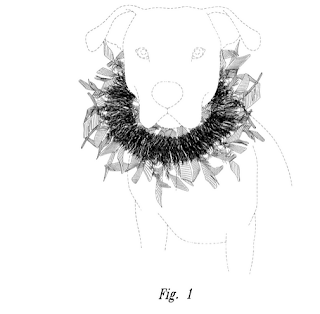For
trademark purposes, "[a] 'parody' is defined as a simple form of
entertainment conveyed by juxtaposing the irreverent representation of
the trademark with the idealized image created by the mark's owner." People for the Ethical Treatment of Animals v. Doughney ("PETA"), 263 F.3d 359, 366 (4th Cir. 2001) (internal quotation marks omitted). "A parody must convey two simultaneous -- and contradictory -- messages: that it is the original, but also that it is not the original and is instead a parody." Id.
(internal quotation marks and citation omitted). This second message
must not only differentiate the alleged parody from the original but
must also communicate some articulable element of satire, ridicule,
joking, or amusement. Thus,
"[a] parody relies upon a difference from the original mark, presumably
a humorous difference, in order to produce its desired effect." Jordache Enterprises, Inc. v. Hogg Wyld, Ltd., 828 F.2d 1482, 1486 (10th Cir. 1987) (finding the use of "Lardashe" jeans for larger women to be a successful and permissible parody of "Jordache" jeans).
When applying the
PETA criteria to the facts of this case, we agree with the district court that the "
Chewy
Vuiton" dog toys are successful parodies of LVM handbags and the LVM
marks and trade dress used in connection with the marketing and sale of
those handbags. First, the pet chew toy is obviously an irreverent, and
indeed intentional, representation of an LVM handbag, albeit much
smaller and coarser. The dog toy is shaped roughly like a handbag; its
name "
Chewy
Vuiton" sounds like and rhymes with LOUIS VUITTON; its monogram CV
mimics LVM's LV mark; the repetitious design clearly imitates the design
on the LVM handbag; and the coloring is similar. In short, the dog toy
is a small, plush imitation of an LVM handbag carried by women, which
invokes the marks and design of the handbag, albeit irreverently and
incompletely. No one can doubt that LVM handbags are the target of the
imitation by Haute Diggity Dog's "
Chewy Vuiton" dog toys.
At the same time, no one can doubt also that the "
Chewy
Vuiton" dog toy is not the "idealized image" of the mark created by
LVM. The differences are immediate, beginning with the fact that the "
Chewy Vuiton" product is a dog toy, not an expensive, luxury LOUIS VUITTON handbag. The toy is smaller, it is plush, and virtually all of its designs differ. Thus, "
Chewy Vuiton" is not LOUIS VUITTON ("
Chewy"
is not "LOUIS" and "Vuiton" is not "VUITTON," with its two Ts); CV is
not LV; the designs on the dog toy are simplified and crude, not
detailed and distinguished. The toys are inexpensive; the handbags are
expensive and marketed to be expensive. And, of course, as a dog toy,
one must buy it with pet supplies and cannot buy it at an exclusive LVM
store or boutique within a department store. In short, the Haute Diggity
Dog "
Chewy
Vuiton" dog toy undoubtedly and deliberately conjures up the famous LVM
marks and trade dress, but at the same time, it communicates that it is
not the LVM product.
Finally, the
juxtaposition of the similar and dissimilar -- the irreverent
representation and the idealized image of an LVM handbag -- immediately
conveys a joking
[261] and amusing parody. The furry little "
Chewy Vuiton" imitation, as something to be
chewed by a dog, pokes fun at the elegance and expensiveness of a LOUIS VUITTON handbag, which must
not
be chewed by a dog. The LVM handbag is provided for the most elegant
and well-to-do celebrity, to proudly display to the public and the press, whereas the imitation "
Chewy
Vuiton" "handbag" is designed to mock the celebrity and be used by a
dog. The dog toy irreverently presents haute couture as an object for
casual canine destruction. The satire is unmistakable. The dog toy is a
comment on the rich and famous, on the LOUIS VUITTON name and related
marks, and on conspicuous consumption in general. This parody is
enhanced by the fact that "
Chewy
Vuiton" dog toys are sold with similar parodies of other famous and
expensive brands -- "Chewnel No. 5" targeting "Chanel No. 5"; "Dog
Perignonn" targeting "Dom Perignon"; and "Sniffany & Co." targeting
"Tiffany & Co."
We conclude that the PETA criteria are amply satisfied in this case and that the "Chewy
Vuiton" dog toys convey "just enough of the original design to allow
the consumer to appreciate the point of parody," but stop well short of
appropriating the entire marks that LVM claims. PETA, 263 F.3d at 366 (quoting Jordache, 828 F.2d at 1486).
Louis Vuitton Malletier S.A. v. Haute Diggity Dog, LLC, 507 F.3d 252, 260-261 (4th Cir. Va. 2007)





